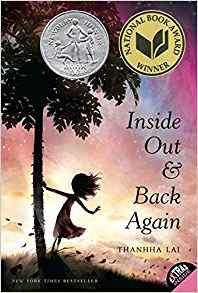Archive for January, 2018
January 27, 2018, 9:28 pm
In this beautifully-rendered fairytale, we find a people oppressed at the hands of a few greedy government officials, who care only about their own comfort and luxury, that they’ve spun legend into truth, scaring the townspeople into believing in an evil witch who lurks in the forest. The Protectorate—the town—is safe, and the Council of Elders will protect the townspeople from the horrors of the witch, if only they obey the Council, working for pennies, living hungry and sad lives, and harvesting the Bog, which the Council owns. Moreover, the town is required to offer a sacrifice to the evil witch—once per year. This sacrifice is the youngest child in the Protectorate. It is to be delivered to the woods where the evil witch will take it and do as she pleases with it.
The Council, of course, knows there is no witch, and perpetuates this old myth from hundreds of years ago, to keep the town compliant and obedient. They know the baby they deliver each year will be eaten by wild animals or die of exposure. It’s gruesome, and selfish beyond measure, that these men are able to live with themselves, knowing this.
But alas, they are wrong. There is, in fact, a witch in the woods. She, named Xan, is not evil, however. She is a kind witch and feels terribly for these infants who are placed in the woods, so each year she makes a trip to the forest and saves the baby. She feeds each a dose of sunlight, and then takes the baby to the “free cities” where Xan is welcomed and each baby is wanted and a family is waiting.
One year, Xan saves a baby who has a crescent moon birthmark on her forehead, and this baby so delights Xan that she spends extra time with her. Day grows dark, and instead of feeding her sunlight, she feeds her moonlight (a much more potent substance). She drinks and drinks, and suddenly Xan realizes what has happened. She has “enmagiced” the child, and no human family could raise a child who has magic. So Xan keeps her for herself, and raises her in the woods with her family which includes Glerk, the swamp monster, and Fyrian, the dragon. They all grow to love the girl who Xan has named Luna.
But Luna’s magic grows out of control, to the point where Xan cannot reverse the girl’s magic as fast as it comes from her. Xan presses “pause” on Luna (putting her into a cocoon-like state) while she returns to the place where she was raised, a castle once full of wizards and artisans and magicians. We find that Xan was saved by a wizard named Zosimos, who fought against the truly evil witch, and saved the population. Xan realizes she must put a spell on Luna, suspending her magic until she’s able to teach her about it. In doing this, she finds that what happened with Zosimos and herself, will now happen to Luna. The mentor’s magic will transfer to the mentee when she becomes age thirteen, and the mentor will die.
Years pass, Luna’s biological mother-locked in the tower by the evil Sisters (the Council’s soldiers)—grows mad but also magical.
Antain, the clear-headed and morally-correct nephew of the head Elder, knows the sacrifices aren’t right.
The story’s confluence is the meeting of Xan (withering and dying), Luna (looking for answers), the madwoman (finally powerful enough with her magic to break free from the tower), Antain (determined to kill the witch and end the sacrifices), Sister Ignatia (the truly evil witch who is after Antain to kill him so he doesn’t expose the lies of the Council).
The townspeople in the Protectorate have hope after many years of sorrow. Each character comes to terms with his own misunderstandings, with the stories and lies told. Memory is our false narrator as the magic serves to erase thoughts, and brings them back in fractured pieces. And finally, good versus evil. This is a beautiful book with characters to love and hate.
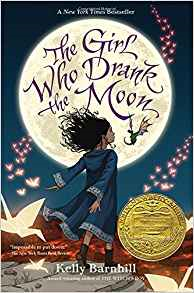
January 21, 2018, 12:58 am
Welcome to Oakley plantation in Louisiana during the Monroe administration, where Mr. and Mrs. Pirrie live with their daughter Eliza. Visitor Mr. Audubon and his apprentice Joseph come to live with the Pirries. Audubon is charged with teaching young Eliza to dance, draw, and paint to ready herself to entertain suiters. While there, Audubon will collect wildlife specimens to sketch and to paint for his Birds of America folio. Fifteen-year-old apprentice Joseph will help by painting backgrounds. Living beneath the floorboards is a little mouse named Celeste. Her mother and father, three brothers and sister, were killed by a blade during harvest. A groundhog named Ellis saved her, nursed her back to health, and brought her to the Pirrie’s house. Under the floorboard, she weaves beautiful baskets out of grasses and feathers. But she is tormented by Trixie and Iliana, two greedy rats who send out Celeste for food, even if the house cat and dog are roaming nearby. Celeste, after being cornered by the cat, is forced to relocate. Celeste climbs the newel post and proceeds up the staircase. She enters a small room that belongs to Joseph. Exhausted from her efforts, she builds a nest in the toe of Joseph’s boot. Young Joseph finds her the next day and rather than tossing her aside, he nuzzles and cuddles her, calling her Little One. From then on, Celeste becomes his companion, living in his pocket and eating the peanuts he feeds her. But much adventure awaits for Celeste. Soon a wood thrush named Cornelius is in the room with her, asking her to fetch him dogwood berries. Celeste obliges, only to be tossed and tumbled because of a violent storm, and carried away down a muddy, raging river. There she is saved by an osprey named Lafayette. Celeste weaves a gondola and asks Lafayette to fly her back to the plantation. This plan works and soon Celeste is back with Joseph. Next, Lafayette is wounded by Audubon, who shot him. Celeste helps her osprey friend escape. The author clearly holds a strong opinion on hunting, in general, and of Audubon’s method for killing birds simply so he may paint them. Hunters, hunting, and guns are cast as the enemy and human folly is highlighted, especially when the hunters shoot poor Joseph in the head (though he is only wounded). Joseph recovers, the bully rat Trixie returns, and Celeste discovers an attic full of furniture including a dollhouse just her size. Joseph leaves, sad he cannot find Celeste. This book, full of beautiful illustrations, is a sweet rendering of personified animals in a human world. The reader eagerly roots for Celeste and Joseph and wishes for them to stay together, but alas Joseph leaves, and Celeste makes a home in the doll house. She is not alone, though, as Cornelius the wood thrush has sent Violet, a wren, to keep her company through the winter.
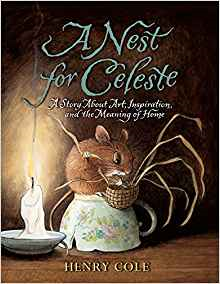
January 18, 2018, 10:47 pm
Fourth-grade Benji suffers from idiopathic epilepsy, and has spent more than 300 days in the hospital during his young life, so much that he has earned a punch-card created by one of the nurses. Benji carries around a titanium lug nut from his rocket scientist father as an example of “how small things can sometimes play a big part in huge endeavors.” When Benji is bullied at school and ends up in the hospital again after a seizure, the doctor gives him the choice of wearing a hideous-looking protective helmet, or getting a therapy dog who can respond to Benji when he has a seizure. Enter Elvis, an enormous Newfoundland dog. The surprise is that Elvis and Benji can talk to each other. As it turns out, Elvis arrived at Benji’s house in error. He was actually on his way to the White House to be the president’s dog. Benji and Elvis disagree on many things, especially when Elvis urges Benji to invite a new boy from school to sit with them for lunch. Benji knows what it’s like to be bullied, and should invite Alex Chang Cohen over, but knows it will be social suicide. Befriending Alex will bring on more bullying. Long story short, Elvis invites him over and a food fight ensues, but so does a new friendship with Alex and Daisy, the star athlete of the school. The three kids and Elvis take on the bully, searching for Benji’s lost titanium lug nut. Benji’s mother, a loud, big-haired, crazy scrapbooker, worries endlessly about Benji, so much she often parks her car in front of the school, just in case her son needs her. She’s hard not to love. This book is heartwarming, as the reader even gains sympathy for the bully, who has his own issues to deal with, including a prosthetic foot! Funny, fast-paced, and earnest, I recommend this book for 3rd to 6th graders.

January 18, 2018, 10:44 pm
Written in 1967 and recipient of the Newberry medal, From The Mixed-Up Files of Mrs. Basil E. Frankweiler, is a perennial favorite. Claudia Kincaid wants to run away because of the injustices in her home life. She has more chores than her three brothers, and is certain her allowance is less than the going rate. Claudia was made for the finer things in life, and doesn’t want to be uncomfortable while running away, so she chooses to hide out in the Metropolitan Museum of Art. She chooses her brother, Jamie, to accompany her because he is rich, being a penny pincher. With unused bus tickets found in the waste basket, Claudia and Jamie embark on their adventure. They use their violin and trumpet cases as suitcases, hiding clean underwear and a change of clothing. Quickly, they figure out how to of avoid the museum guards, how to feed themselves with vending machine food, and how to sleep on the museum furniture. One day, they observe large crowds around a new exhibit, a twenty-four inch Angel sculpture, rumored to have been sculpted by Michelangelo, though acquired by the museum for only $225. Claudia and Jamie are determined to find out if the carving is a true Michelangelo, or a fraud. They read and research, looking for clues, when they come upon three concentric circles with an M inside, the exact way Michelangelo signed his other works, they are certain this is the real deal. They write a letter to the museum detailing their discovery. The museum responds respectfully, but skeptically, so Claudia and Jamie go straight to the source: the donor of the statue, Mrs. Basil E Frankweiler. At her house, she knows right away these two children are the runaways she read about in the newspaper. She likes that they are resourceful and curious and unwilling to reveal too much about themselves. She tells them the truth, that she is certain the statue is a true Michelangelo, and that she will leave it to the children and her will, if they keep her secret. The children agree, and adopt Mrs. Basil E. Frankweiler as their surrogate grandmother.
At the heart of this book is a girl on a quest to feel different and special. Having a secret makes her different, and when she meets Mrs. Basil E. Frankweiler, the elderly woman affirms this feeling. Having a secret, and most importantly—letting others know that you have a secret—is the exciting part. “Happiness is excitement that has found a settling down place, but there is always a little corner that keeps flapping around.”
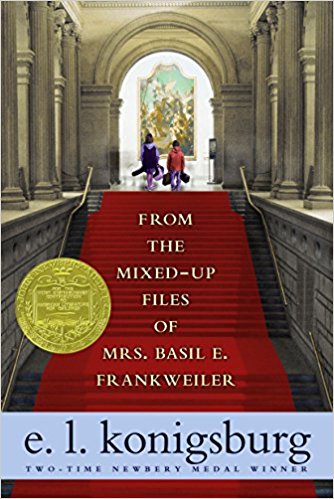
January 18, 2018, 10:40 pm
Caitlin has Asperger’s and sees the world in black and white. Her big brother has been killed in a school shooting, and Caitlin is having a hard time making sense of losing him. When she learns the word closure, she knows that’s what she needs. She is relentless in persuading her father to finish her big brother’s Eagle Scout project, certain that completing the wooden chest will soothe her aching grief. Heartrending. This book was adapted for the stage, as well, and the production we saw at The Kennedy Center was phenomenal.

January 18, 2018, 10:35 pm
Peg Kehret is twelve years old when her leg begins to twitch. By nighttime, she is sick with a high fever and aching head to toe. Her parents act quickly, getting her to the hospital where she is diagnosed with polio. Soon she is diagnosed with three types of polio, paralyzed from her neck down, and in jeopardy of not being able to breathe and swallow. Isolated, she is alone and away from her family, as the doctors try to combat the fever. Eventually, thanks to a chocolate milk shake, her fever lessens and Peg improves, learning to swallow, and breathe freely. Once moved to a rehab hospital, she becomes roommates with four other girls who have polio, as well. A sisterhood is formed and the five grow to depend on each other, sharing food, and singing together each night. The readers learn of other patients who spend their lives in iron lungs, respirators that are akin to “being buried alive in a coffin.” We hear of stories of PT and OT, nurses who were mean, and nurses who were saints. We learn of Sister Kenny treatments, originating in Australia and becoming vital to the recovery of polio patients in the U.S. From oxygen tent, to wheelchair, to walking sticks, to walking unaided, Peg takes us on her humble journey. The reader particular appreciates the author’s honest portrayal of her experience. She was a young girl who often felt robbed of her childhood, but also one who matures into a poised woman with a heightened perspective. This easy-to-read memoir is written like fiction, and is hard to put down.
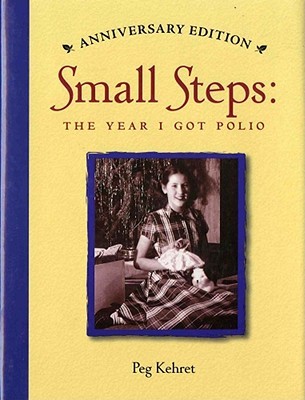
January 18, 2018, 10:28 pm
The War that Saved my Life by Kimberly Brubaker Bradley tells the story of ten-year-old Ada who lives in London with Mam (her mother) and her little brother, Jamie. The story begins in the summer of 1939 and England is on the verge of war. Children are being sent away to the countryside for fear that London will be bombed. Ada was born with a clubfoot, and won’t be sent away with Jamie because her mother is ashamed she is crippled, and confines Ada to their small apartment. She’s allowed to look out the window as a “great kindness.” Mam treats Ada like her servant, ordering her to fix “bread and drippings” for herself and Jamie. Ada is denied the same amount of food, though she doesn’t worry because Jamie always shares his. Sometimes, Mam punishes Ada by forcing her into the cabinet under the sink where it is dark and there are cockroaches. The reader hates Mam.
Ada knows her only hope is to teach herself to walk. When Mam is at work, and Jamie at school, she practices though it causes her tremendous pain. When Jamie leaves for the bus for the countryside, Ada sneaks out with him. Once in the countryside, they are the last to be chosen by families, and therefore brought to the house of Susan Smith, a woman without children who struggles with issues of her own. Her best friend, Becky, died years ago, and Susan has never been the same, often wallowing in loneliness. She begrudgingly takes in the children when pressured to do her “duty.” She doesn’t know how to raise children but right away, she feeds and bathes them. She takes Ada to the doctor who diagnoses her clubfoot and wonders why it wasn’t corrected in infancy. He says it can be fixed with surgery. Ada, though fearful of Ms. Smith, grows to love Butter, the horse in Susan’s barn. She teaches herself to ride, and makes friends with Maggie, a girl who is home from boarding school.
In fits and starts, Ms. Smith and the two children learn to live together. They grow to care about each other. The war escalates and Ms. Smith and Ada are called to duty to help wounded soldiers. Ada even identifies a man as a spy. Mam eventually comes for the children, and they return with her. Mam abuses Ada, and admits she never wanted kids, and then she was born with a crippled one. Ms. Smith takes no time is going after them, a move that “saves” her life. This wonderful book is rich with historical context, deeply-realized characters, and a villain (Mam) that the reader truly loathes for her unconscionable treatment of Ada. There is now a sequel to this book, The War I Finally Won.
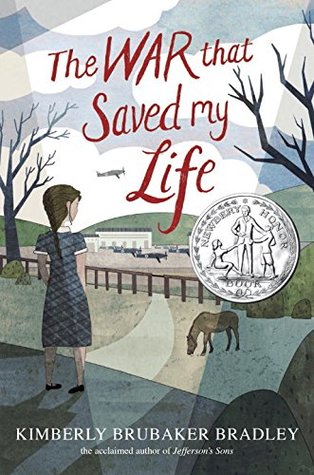
January 18, 2018, 10:25 pm
Is there a more beautiful book than Inside Out and Back Again by Thanhha Lai? This gorgeous retelling of Ha’s experience as she and her family flee from Vietnam to the United States begins by acquainting the reader with the young girl’s mother and three older brothers. Father is gone, as he was captured by the Communists years earlier. As tensions increase in North Vietnam, the family moves toward Saigon. While conflicted as to whether they should leave, Mother decides it is for the best, even though they worry Father might return to find them gone. The Uncle has found a way for them to flee, and with thousands of others, they cram onto a boat only moments before the Communists move in. Food and water are scarce, as the weeks pass on the boat toward Thailand. Each passenger is given a clump of rice—small, medium, or large—based on their height. Though Ha misses Vietnam terribly, she notes “at least the moon remains unchanged.” Eventually they make it to Guam and to a refugee camp where they are fed food from cans. Ha’s family travels to the States, sponsored by Mr. Johnston, a church-goer in Alabama. Written in verse, this book tells of Ha’s travails, as she is bullied in school, humiliated, called “pancake face.” Ha is even threatened physically, and her brother Vu teaches her self-defense. She learns English; she notes that “whoever invented English must have loved snakes” because of the tricky S sounds. In Vietnam, Ha was very smart. In America, she must re-learn everything, including the alphabet. “So this is what dumb feels like,” she observes. The family experiences closure for Father, who they fear will never return, and hold a mourning ceremony as a way to put the past behind them and move forward. This book is appropriate for fourth graders through adults. It is a seamless read about family, starting over, forgiveness; it is about remembering our first places, and what made those places special. Bookended by Tet (New Year) celebrations, the reader will cherish this book and want to share it. (less)
